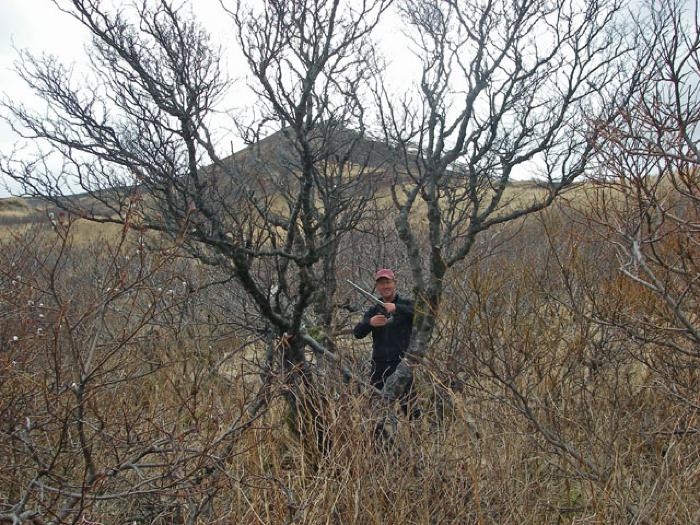Birch — Qasrulek, Uqgwik

The Kenai birch (Betula kenaica) is a deciduous tree with a grey, papery bark and pointed oval leaves. The Kenai birch grows in scattered groves around the Kodiak Archipelago. It is particularly abundant near the communities of Larsen Bay and Old Harbor and is sometimes referred to as black birch. The Alutiiq word for birch, uqgwik, is also used to mean “tree” and is sometimes applied to alder bushes. This gnarly tree is distinctly different from the Alaska paper birch (Betula neoalaskana) that provides mainland Alaskans with bark for houses, canoes, and containers.
Alutiiq people use Kenai birch for firewood because it burns slowly and generates great heat. Kenai Birch is also hard and durable and was once carved into a variety of wedges, mauls, bowls, oars, hammers, and ax handles. In addition to birch wood, Alutiiq people collect birch bark from both drift logs and live trees. The bark of living trees is easiest to harvest in the spring when their sap is running. Kenai birch bark can be used to start a fire, mix up some snuff, or make a hunting whistle or a small container.
Portions of the Kenai birch tree also have medicinal properties. Steam bathers use leafy birch branches to switch away pain and fatigue. Healers employ the bark in cleaning wounds because it can draw the pus out of an infection. Alutiiq people soak Kenai birch bark in water, place it on an injury, and then apply a bandage. Some people use only the loose outer bark, while others apply an entire thickness, placing the inner side of the bark on a wound.
